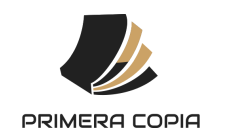-
What an Author Should Avoid in Print-on-Demand Publishing
As of now, it is muddled which plan of action will win, customary distributing or print-on-request (POD). Each model has one sub-class. Conventional distributing says that presses will print a specific number of books in advance – 20,000 for a promising book by another writer to 250,000 duplicates for a set up author. The POD model doesn’t print any books until they are paid for by the client. The book is kept in advanced structure and appropriated on the web. These two plans of action couldn’t be more not the same as one another, despite the fact that they share a similar industry, vie for similar writers, and make precisely the same actual books. The dispersion has drastically changed lately. It should be noticed that conventional distributing has a profound situated antipathy for POD, which I will clarify as of now.
The principal sub-classification, for customary distributing, is a more traditionalist form of the first model of printing a great deal of books in advance, which I call weak distributing. Irresolute distributing implies a bigger house will print just 5,000 duplicates of a book that they may have once printed 50,000 duplicates. The advertising financial plan is seriously cut.
This semi distributing model is neither customary distributing nor POD distributing, and it is a model that is illogical to an industry that, all things considered, requires intensity and much danger taking. Apathetic customary distributing has shaped because of different weights on the conventional distributing industry as of late, for example, the downturn; the ascent of the Internet and vigorous web based promoting; the quick development of POD distributing; and even things like biting the dust papers (that take with them their organizations of book surveys and its own dispersion).
The sub-class for POD distributing is a lot bigger industry than the fundamental classification; undoubtedly, the very thought of POD distributing is my own innovation. In the event that one acknowledges, at that point, that POD distributing exists until I can demonstrate why, POD’s sub-class is vanity distributing and independently publishing. The two terms, vanity distributing and independently publishing, are indistinct; both include the writer paying cash in advance to have their book distributed and afterward acquiring a specific number of duplicates of that book and selling them. Customary distributers – the enormous presses like Random House or Farrar, Straus Giroux (Macmillan)- – have come to scorn POD distributing in light of the fact that in their psyches it is related with independently publishing, which is and consistently was detested by conventional houses.
Independently publishing has been disapproved of by all aspects of the book business, truth be told, from the scholarly community to the clients themselves, in spite of the way that many noted American writers (Stephen Crane, Edgar Allen Poe, and Walt Whitman) independently published their work-frequently effectively both as far as deals and their books’ heritages. As of late, with the digitization of society, it has gotten far simpler to independently publish for creators. Along these lines, an immense independently publishing industry has advanced online that joins POD innovation. There is an extra shame from conventional houses at selling books straightforwardly to writers, which is the thing that independent publishers do. It is hazy why that shame exists.

